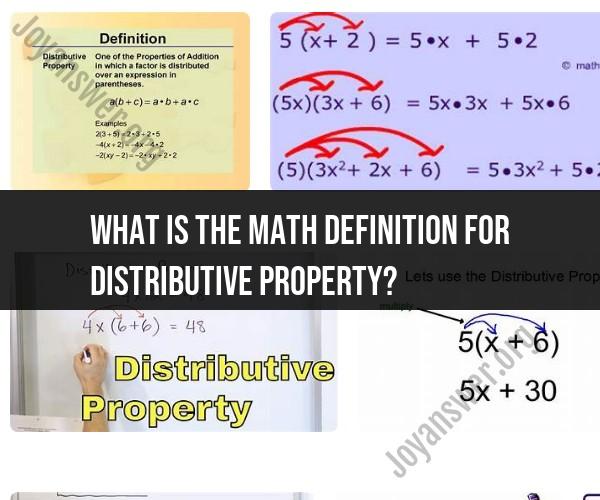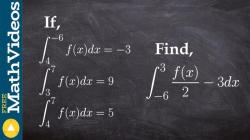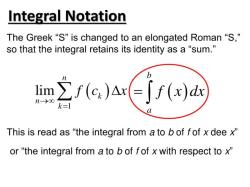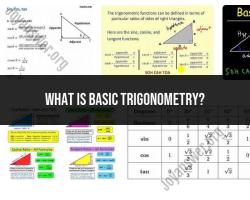What is the math definition for distributive property?
The distributive property is a fundamental mathematical concept that describes how multiplication interacts with addition or subtraction. In formal mathematical terms, the distributive property is defined as follows:
For any numbers a, b, and c, the distributive property states that:
a * (b + c) = (a * b) + (a * c)
In this equation:
- "a" represents a real number, often called the multiplier or factor.
- "b" and "c" represent real numbers that are being added or subtracted within the parentheses.
- The left-hand side (LHS) of the equation shows the result of multiplying "a" by the sum (b + c).
- The right-hand side (RHS) of the equation demonstrates the same result obtained by multiplying "a" by "b" and "a" by "c," then adding those products together.
The distributive property essentially states that you can distribute or break down a multiplication operation over the addition (or subtraction) operation within parentheses. It is a fundamental principle in algebra and arithmetic and is used to simplify expressions, solve equations, and perform various mathematical operations. Understanding and applying the distributive property is essential for working with algebraic expressions and equations in mathematics.
What is the mathematical definition of the distributive property?
The distributive property of multiplication over addition states that the product of a number and a sum is equal to the sum of the products of the number and each term of the sum. In other words, we can distribute a number over a sum.
The mathematical definition of the distributive property is as follows:
a(b + c) = ab + ac
where , , and are any numbers.
How does the distributive property work in algebra and arithmetic?
The distributive property works in algebra and arithmetic in the same way. It allows us to distribute a number over a sum or difference.
For example, in algebra, we can use the distributive property to simplify the expression as follows:
5(2x + 3y) = 5(2x) + 5(3y) = 10x + 15y
In arithmetic, we can use the distributive property to solve the multiplication problem as follows:
5 \times (20 - 10) = 5 \times (20) - 5 \times (10) = 100 - 50 = 50
Can you provide a formal explanation and proof of the distributive property?
Here is a formal explanation and proof of the distributive property:
Explanation:
The distributive property is a property of multiplication that allows us to distribute a number over a sum. This means that we can multiply each term of the sum by the number and then add the products together.
Proof:
To prove the distributive property, we can use the following steps:
- Let , , and be any numbers.
- We want to show that .
- We can start by expanding the left-hand side of the equation:
a(b + c) = (a)(b) + (a)(c)
- We can then rearrange the terms on the right-hand side of the equation:
(a)(b) + (a)(c) = ab + ac
- This shows that , which is the distributive property.
What are the fundamental principles and applications of the distributive property?
The fundamental principle of the distributive property is that we can distribute a number over a sum. This means that we can multiply each term of the sum by the number and then add the products together.
The distributive property has many applications in algebra and arithmetic. For example, we can use the distributive property to:
- Simplify expressions
- Solve multiplication problems
- Solve real-world problems
How to use the distributive property to simplify expressions and equations?
To use the distributive property to simplify expressions and equations, follow these steps:
- Identify the expression or equation that you want to simplify.
- Look for the number that is being multiplied by the sum or difference.
- Distribute the number to each term of the sum or difference.
- Combine the like terms.
- Simplify the expression or equation.
For example, to simplify the expression , we would follow these steps:
- Identify the expression that we want to simplify:
- Look for the number that is being multiplied by the sum:
- Distribute the number to each term of the sum:
- Combine the like terms:
- Simplify the expression:
We can also use the distributive property to simplify equations. For example, to simplify the equation , we would follow these steps:
- Distribute the number in the left-hand side of the equation:
- Combine the like terms:
- Subtract 15 from both sides of the equation:
- Divide both sides of the equation by 10:











